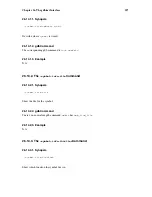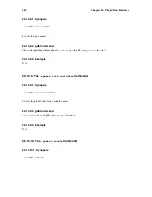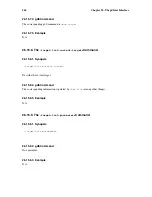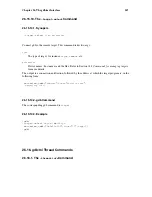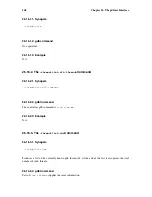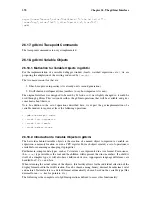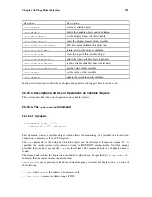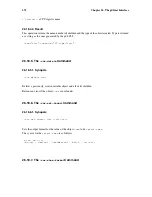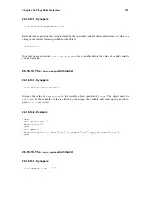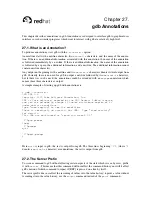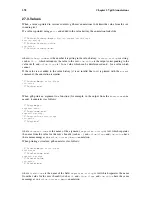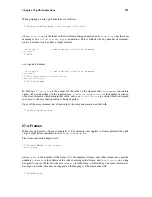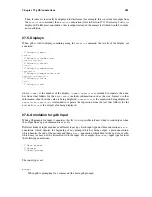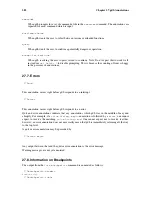
Chapter 26. The gdb/mi Interface
271
Operation
Description
-var-create
create a variable object
-var-delete
delete the variable object and its children
-var-set-format
set the display format of this variable
-var-show-format
show the display format of this variable
-var-info-num-children
tells how many children this object has
-var-list-children
return a list of the object’s children
-var-info-type
show the type of this variable object
-var-info-expression
print what this variable object represents
-var-show-attributes
is this variable editable? does it exist here?
-var-evaluate-expression
get the value of this variable
-var-assign
set the value of this variable
-var-update
update the variable and its children
In the next subsection we describe each operation in detail and suggest how it can be used.
26.18.3. Description And Use of Operations on Variable Objects
This section describes the use of operations on variable objects.
26.18.4. The
-var-create
Command
26.18.4.1. Synopsis
-var-create {
name
| "-"}
{
frame-addr
| "*"}
expression
This operation creates a variable object, which allows the monitoring of a variable, the result of an
expression, a memory cell or a CPU register.
The
name
parameter is the string by which the object can be referenced. It must be unique. If
-
is
specified, the varobj system will generate a string "varNNNNNN" automatically. It will be unique
provided that one does not specify
name
on that format. The command fails if a duplicate name is
found.
The frame under which the expression should be evaluated can be specified by
frame-addr
. A
*
indicates that the current frame should be used.
expression
is any expression valid on the current language set (must not begin with a
*
), or one of
the following:
•
*
addr
, where
addr
is the address of a memory cell
•
*
addr
-
addr
-- a memory address range (TBD)
Summary of Contents for ENTERPRISE LINUX 3 - SECURITY GUIDE
Page 1: ...Red Hat Enterprise Linux 3 Debugging with gdb ...
Page 12: ...2 Chapter 1 Debugging with gdb ...
Page 28: ...18 Chapter 4 Getting In and Out of gdb ...
Page 34: ...24 Chapter 5 gdb Commands ...
Page 44: ...34 Chapter 6 Running Programs Under gdb ...
Page 68: ...58 Chapter 8 Examining the Stack ...
Page 98: ...88 Chapter 10 Examining Data ...
Page 112: ...102 Chapter 12 Tracepoints ...
Page 118: ...108 Chapter 13 Debugging Programs That Use Overlays ...
Page 138: ...128 Chapter 14 Using gdb with Different Languages ...
Page 144: ...134 Chapter 15 Examining the Symbol Table ...
Page 170: ...160 Chapter 19 Debugging remote programs ...
Page 198: ...188 Chapter 21 Controlling gdb ...
Page 204: ...194 Chapter 22 Canned Sequences of Commands ...
Page 206: ...196 Chapter 23 Command Interpreters ...
Page 216: ...206 Chapter 25 Using gdb under gnu Emacs ...
Page 296: ...286 Chapter 27 gdb Annotations ...
Page 300: ...290 Chapter 28 Reporting Bugs in gdb ...
Page 322: ...312 Chapter 30 Using History Interactively ...
Page 362: ...352 Appendix D gdb Remote Serial Protocol ...
Page 380: ...370 Appendix F GNU GENERAL PUBLIC LICENSE ...
Page 386: ...376 Appendix G GNU Free Documentation License ...
Page 410: ......

